TS
boleroes11
Reaching heaven
Reaching heaven

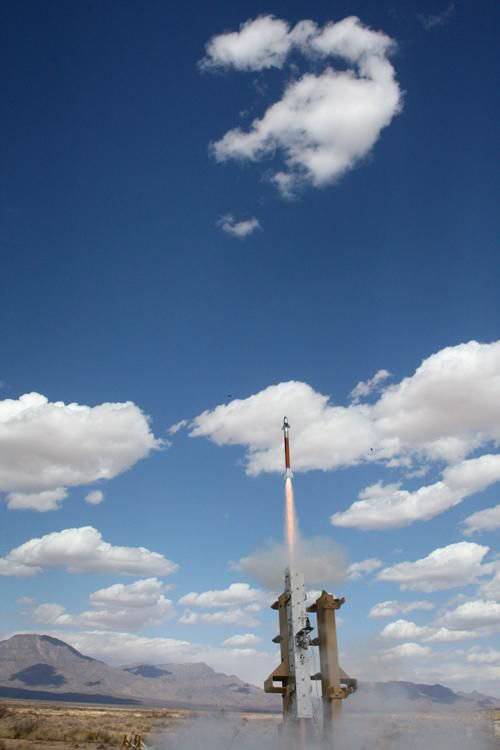
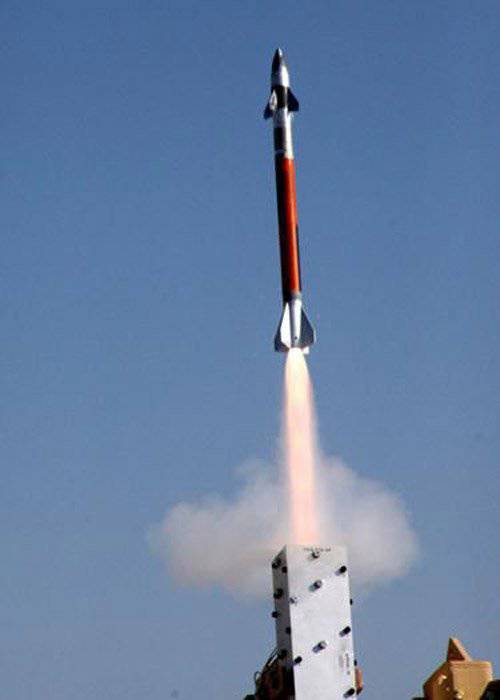
In March 2013 a miniature rocket EAPS from Lockheed Martin has been tested against a mortar shot
Rocket, artillery and mortar threats are of great concern in theaters, providing effective protection against them has become an urgent operational needs in Afghanistan. Consider some of these systems.
In May 2013 the company Raytheon has completed two pilot flight test their missiles Ai3 (Accelerated Improved Intercept Initiative). It will be part of a system designed to protect deployed troops and military bases abroad, and provide low-cost possibilities to intercept rockets, artillery shells and mortar (C-RAM - counter-rocket, artillery and mortar).
Rocket Ai3 - it's just one of the development programs in the area of C-RAM. Earlier in March, Lockheed Martin conducted a test flight of its controlled miniature rocket MHTK (Miniature Hit-To-Kill) at White Sands proving ground in its project to expand the protection and survival of EAPS (Extended Area Protection and Survivability).

Ai3 missile developed by Raytheon
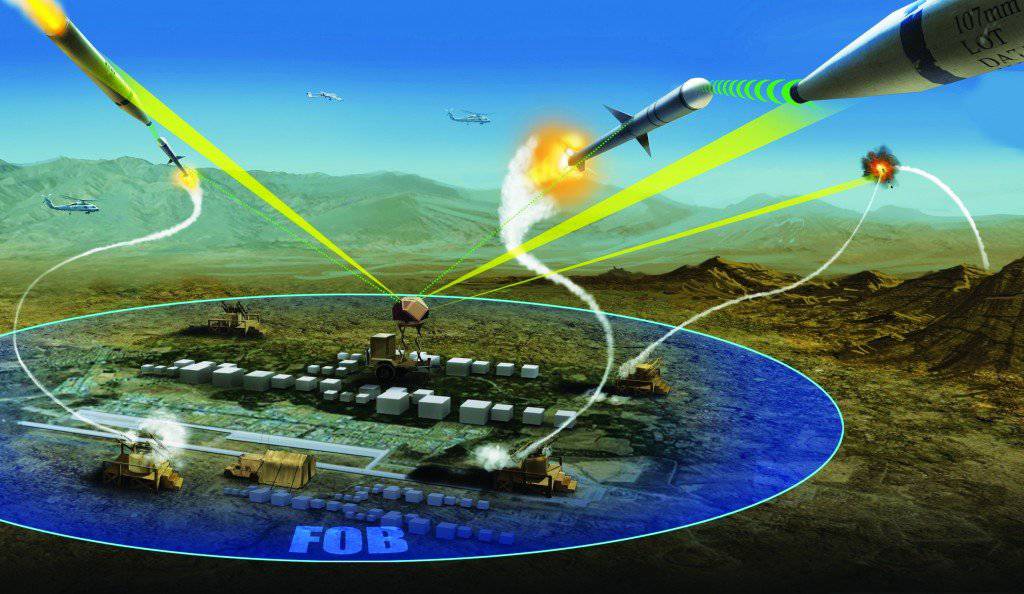
Artistic representation of antiaircraft missile capabilities Ai3, defend the base against attacks
New generation
These two missile programs are an indicator of where directed C-RAM technology and opportunities in the coming years. Attack missiles, artillery and mortars last for few seconds, and current capabilities provided by C-RAM weapon systems that are effective but have limitations on certain types of targets and increase the risk of neutralizing targets near the attacked object.
New missile interceptors will provide improved C-RAM defense by destroying rockets, artillery and mortar targets on the distant approaches. However, they must be cost-effective from an economic point of view - the destruction of targets with the aid of expensive missiles may give an advantage to the enemy. Rockets should be able to hit targets more complex type, moving at high speed at a low altitude.
Ai3 missile designed primarily for this purpose. Raytheon Company in February 2012 received an order for 79.2 million dollars to develop an interceptor missile within the 18-month phase of the technological demonstrator. The outcome of these studies should be intercepting missiles moving on so-called low elevation angle (the angle of the gun barrel that fires artillery ammunition).
Steve Bennett, program director Ai3 company Raytheon, said: "Missiles with a low elevation angle hardest hit because of the very short time of flight ... and they are also difficult to detect, track and intercept."
In order to reduce the cost of rockets Ai3 using an existing technology. Bennett said that is one Ai3 missiles AIM-9M Sidewinder «air-to-air" and it is worth the same rocket engine. Software and algorithms for sensor taken from the Small Diameter Bomb II, which allows the product to market faster, save time developing and testing new components.
Urgent needs
Requirements for the U.S. Army C-RAM capabilities based missile system were formulated in a joint statement on the operational requirements. These requirements were identified in mid-2011, the request for proposals was released in October 2011, industrial proposals approved a month later, and the contract was issued in February 2012.
Launcher Avenger, control system and a radio frequency Ku-band sensor supplied by the Government, and Raytheon Company, in turn, showed a complete chain of destruction with all system components.
"Once the radar detects an NMI purpose and defines it as a threat to the protected area, it tells the control room, tracks the target, and then the rocket Ai3 knocks her. Duration of the combat scene less than 10 seconds, "- said Bennett.
Real missile launches ten Ai3 took place in August 2013. If eight out of ten missile successfully hit the target, then Ai3 enters initial production stage. Current contract provides for options on 754 missiles, their production will take 12 months.
Meanwhile, the company Lockheed Martin in conjunction with the research center of aviation and missile systems continues to develop the project EAPS. The first contract was issued in 2007, and then funded by several special orders.

MHTK rocket and mortar round struck her

Nasal part of the rocket MHTK closeup
Small size
Launch MHTK has a length of 68 - 69 cm, diameter 40 mm, weight 2.26 kg when starting. Type missiles direct injury means that it does not have warheads and destruction of targets is performed by the kinetic energy of the rocket flies to the target at a very high speed. Light weight and easy to move missiles increase its effectiveness in finding the target.
Small size and lack of missile warheads means that it is economically profitable to produce and Lockheed Martin company strives to maintain its value in the range $ 16,000 apiece.
Director of Business Development program EAPS in Lockheed Martin's Chris Murphy said that the first missile launches were held in May 2012, where the missile was tested aerodynamics. The aim of the project is to increase the opportunities EAPS interception to "at least 2.5 km long" that is greater than 1 km, provided by existing weapon systems.
Murphy said that after the first test flight was planned to intercept the end of 2012, but this schedule has been modified to comply with additional evaluation, after which in March 2013 tests were carried out to intercept.
"During the flight tests, we mainly examined each component of the system, with the goal in the air, we could see how the rocket will respond to signals from the target and how to take corrective signals from a ground station," - he explained.
Another test interception was conducted in September 2013 against the same mortar rounds, which was used in the March test.
"Depending on the availability of permitted ranges from December to January [2013 - 14], we fired missiles, which is interesting army. I would describe this goal as a medium caliber - continued Murphy. - We understand that the army wants to continue to invest in science and technology, and we can expect several tests, approximately two - four per year. "
Further developments
Lockheed Martin company is also considering installing a homing missile (thus eliminating the need for a ground station lighting) and develops his own conception of the launcher.
Like Ai3, MHTK missile designed for use with any launcher and system control and guidance provided by the U.S. Army. Raytheon Company and Lockheed Martin intend to offer their systems to meet military program IFPC2-I (Indirect Fire Protection Capability Increment 2 - Intercept - protection against indirect fire stage 2 - intercept), which has a C-RAM component.
Financing IFPC2-I will be conducted from the presidential budget of $ 600 - $ 700 million in the period from 2014 to 2018. Request for information was released in August 2012, but the work in this direction has been suspended and an inquiry is not expected before 2015 - 2016.
Army gets access to technology EAPS MHTK, Ai3, and other programs in order to understand whether they meet the requirements of the Army C-RAM. There are also plans to develop capabilities to fight drones and even fight with cruise missiles.
According to our information request army wants to have technology have already reached the level of preparedness of the sixth or higher, so that it can be immediately implemented in phase refinement and implementation in production since the beginning of 2016.
Meanwhile, work continues on the protection of existing units using radar systems, which can offer the possibility of recognition and prevention.
In June 2010, the Australian Army has leased the company Saab Systems for 45.2 million mobile multibeam radar Giraffe AMB 740 mounted on the car Piranha. It was rented by the fact that the Australian Army has taken responsibility for C-RAM-protection multinational base in Afghanistan in December 2010. Giraffe has become the most rapidly deployable system that checked into force contingents and other countries, including Estonia, France, Sweden, UK and USA. Intermediate opportunities Rent radar allowed to explore the possibility of detecting the intermediate C-RAM, and then followed by the purchase of three radar Giraffe AMB a contract worth $ 83 million issued by the Australian Army in December 2010 as part of the Land 19 Phase 7A on the ground missile defense. first two delivered in September 2012 and were sent directly to Afghanistan, while the third was transferred to the Australian Army in January 2013 and left in Australia in the 12th Airborne Regiment for training.
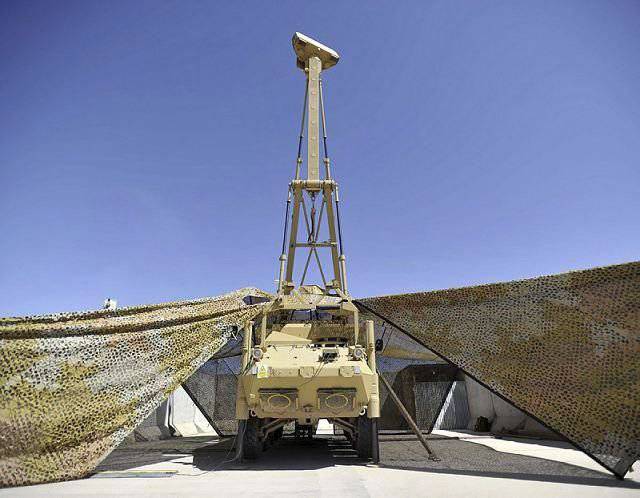

Giraffe AMB radar uses the Australian Army in Afghanistan for early warning of incoming missiles, artillery or mortar ammunition
Giraffe AMB consists of the antenna mast, rotating angular velocity of 60 rev / min, providing a circular cover 360 ° at a distance of 20 km for the C-RAM systems and at a range of 120 km for air targets at low and high altitudes. He carried on three trucks SX45 8x8 from Rheinmetall MAN Military Vehicles (RMMV). Once the radar detects a ballistic target, it provides estimates of the coordinates of the point and start point of the meeting, which is then refined with each new measurement made radar to calculate the exact point of the meeting.
Saab's representative said that the company is interested in the Australian Army plans to improve its missile defense capabilities ground on Phase Land 19 Phase 7B, which incorporates components of C-RAM.
The representative of the Australian Army, said: "Stage Land 19 Phase 7B will be based on the ability to protect their forces" detect and alert "ground missile defense, acquired the Phase Phase 7A. It will combine the functions of "detect and alert" Phase Phase 7A RAM and ground missile defense capabilities that will detect, manage and mitigate the impacts of weapons and sensors. "
Land for the project also purchased 19 light protivominometny radar LCMR (Lightweight Counter Mortar Radar), made for the U.S. Army by SRC on an agreement on arms sales abroad. LCMR architecture includes LAN, air defense control system developed area, workstations and missile defense, field-sales service, spare parts, training and technical and logistical support.
This project also includes a wireless audio-visual warning system Wireless Audio and Visual Emergency System (WAVES), which gives warning signals based operator, announces the alarm for personnel located in close proximity to the alleged projectile, through a series of sirens and flashing lights.
British Accents
British C-RAM capabilities developed under the project of automatic detection and prevention of AS & W (Automated Sense and Warn). It also uses radar Giraffe AMB and LCMR. Intercept capability ensures land complex Phalanx Weapon System (LPWS), but it has been borrowed from the Navy and then returned after the operation Telic in Iraq in 2010.
In addition to network systems AS & W British Ministry of Defense has developed and launched a short-range radar detection Qinetiq Alarm to counter the missile threat in the area of the forward bases.
The representative of the Ministry of Defence said: «C-RAM - is an emergency requirement and as such it is not included in the mandatory set of programs of the Ministry." This means that it is not funded, but there is a $ 12.4 billion "unallocated funds" that are available for additional projects. However, these projects receive external funding "only if they have to be performed in a timely manner, and in accordance with the evaluation of their priority at the moment."
Warning system to help evacuate personnel to a safe area, but nevertheless, rockets and missiles can still reach the base. In Iraq, the capability to intercept C-RAM Support Complex LPWS. Raytheon has produced 10 units for the UK and 44 complex for the U.S., which has deployed 29 complexes. Complex idea is that, besides the use of air defense Phalanx 20mm Gatling gun to "saturation" metal airspace to destroy any approaching objects.
Anywhere without Germany
The U.S. Army military bases in the states of Oklahoma and Washington organizes two experienced air defense battalion equipped complexes LPWS. Army will operate the systems, and the company Raytheon will provide the service technician. Future plans for deploying LPWS remains to be determined.
Germany has recently developed an anti-aircraft artillery system MANTIS (Modular, Automatic and Network-capable Targeting and Interception System) short range. Developed by Rheinmetall Air Defence, MANTIS basic package includes two radar installation Oerlikon Skyshield, which are connected to the control station equipped with the standard secure 20-foot container.
Station controls the interception target by four 35-mm guns Millennium, leading fire ammunition Ahead (Advanced Hit Efficiency And Destruction - improved efficiency and destruction hit), which produces a cloud of flying smaller submunitions finished destroying the approaching target. The gun can shoot with a rate of 1000 rounds / min, although the overall ammunition is only 252 shots.

Anti-aircraft artillery system MANTIS, developed by Rheinmetall
According to a statement Rheinmetall, in this basic configuration MANTIS can defend the base or platform measuring 500 x 500 meters Each component can be transported by truck. Skyshield sensor consists of a search radar I-band (8.6 - 9.5 GHz), the optional block identification "friend or foe", the data processing unit, power supply systems and optoelectronic unit consisting of cameras, IR cameras, video monitoring module, laser rangefinder and devices ranging.
German Air Force had purchased two sets of MANTIS, each consisting of six 35-mm guns, Millennium, two radars and command post to the respective units and service modeling. There are options to purchase two additional complexes, but they have not been fulfilled. Germany recently withdrew its troops from Afghanistan, so that MANTIS yet to deploy in active combat overseas.
The pillar of cloud
In Israel, the company has developed a system Rafael Iron Dome for national needs opportunities C-RAM. A company representative said that it was designed for only two and a half years and caught "in April 2011 more than 500 missiles fired at strategic installations and civilian areas in southern Israel, including Operation Pillar of Defense (Cloud pillar) in November 2012, in which Iron Dome intercepted 421 missile with a share of successful attempts over 85%. "
Iron Dome consists of multitasking radar ELTA EL/M-2084 for fire control, command and control unit, and the BMC developed mPrest Systems, launchers with 20 interceptor missiles and missile Tamir. Upon detection of radar targets its trajectory estimated BMC and to intercept a missile launched Tamir.
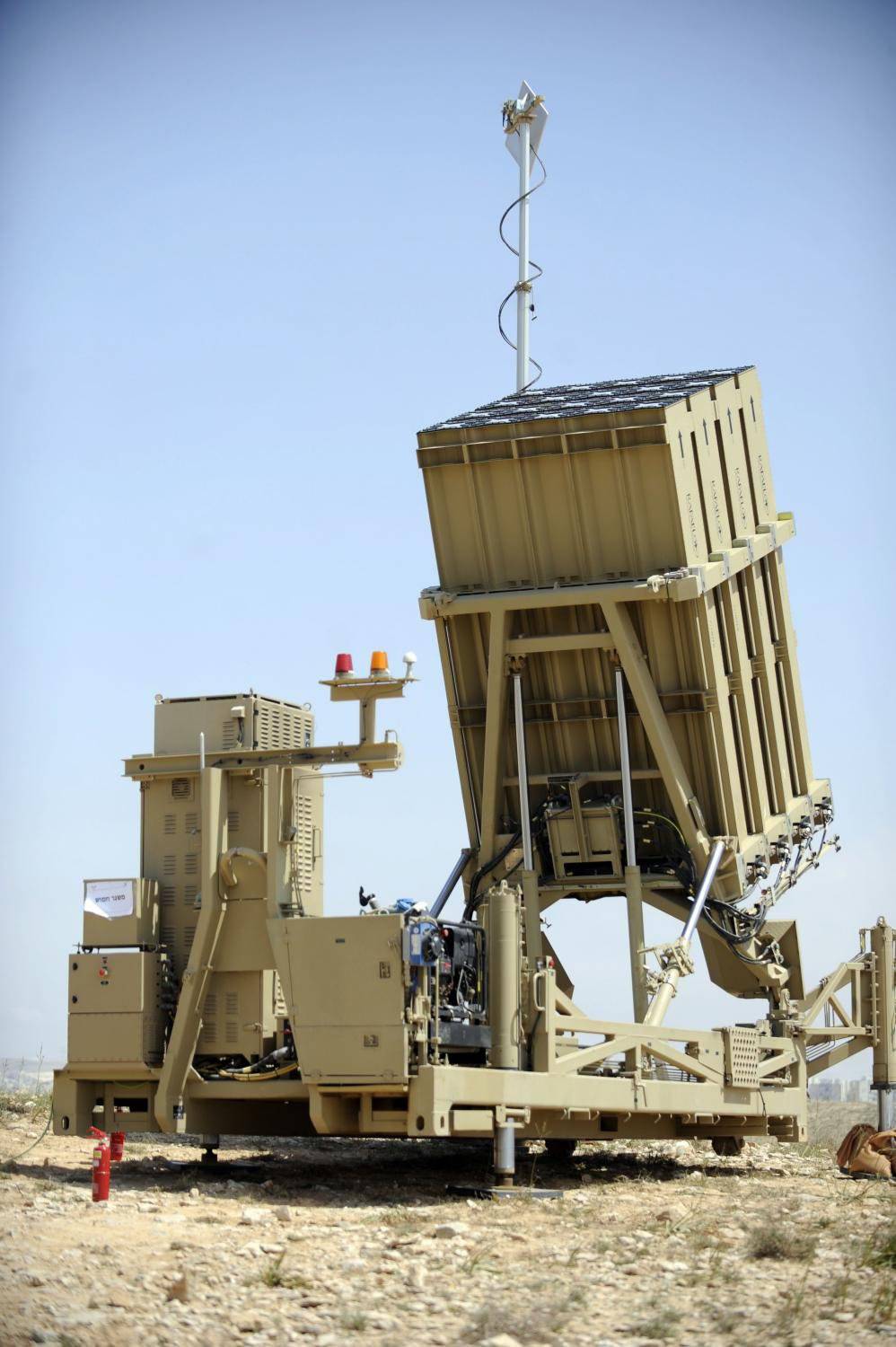
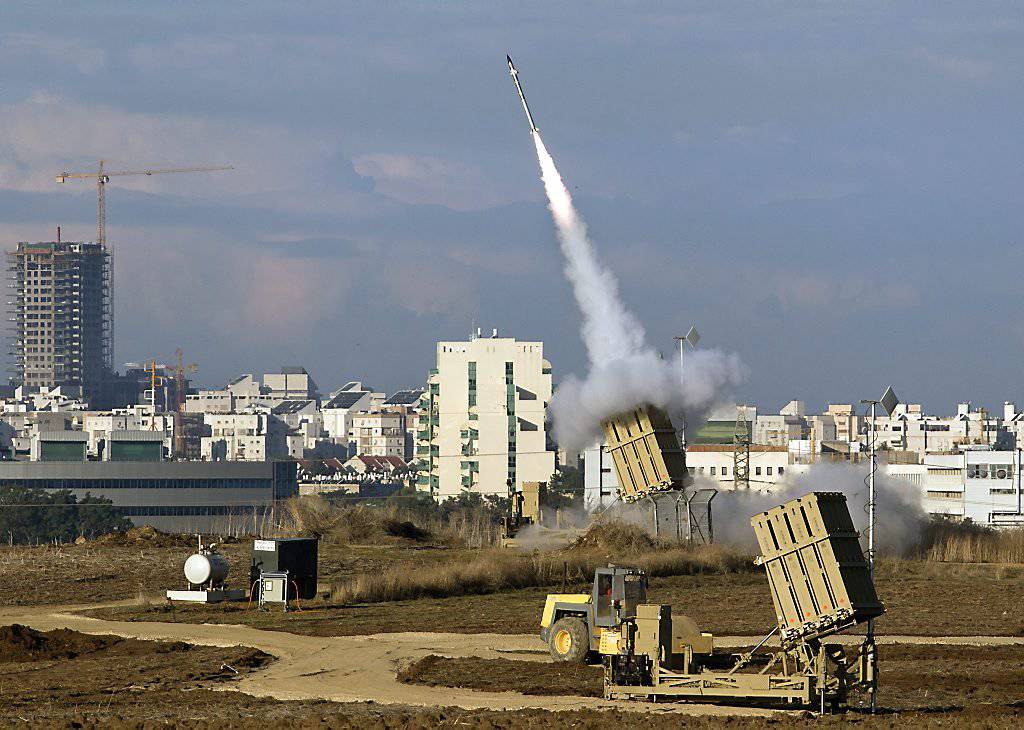
Iron Dome complex from the company Rafael protects Israeli cities
A company representative said that during start-up gets rocket trajectory data from the BMC via the communication channel. Next Tamir flies and uses its own seeker to capture target at close range and conducts missile within a given corridor.
Remote detonator to initiate missile warhead to inflict maximum damage. One launcher can protect against rockets and mortars day and night mid-sized city; it only identifies the threats that fly into the protected zone.
In addition to the use of artillery and missile systems for the C-RAM, there is a third option - or directed energy laser systems. Boeing is working on a program of high-energy laser HEL (high-energy laser) U.S. aerospace command.
Rheinmetall company is also developing a system of HEL. In November 2012 she spent on the ground in Switzerland weapons testing stations 30 kW and 20 kW, equipped with gun mounts Oerlikon Millennium and connected to the fire control system Skyguard.
The company reported that the 15-mm steel beam was cut at a distance of 1000 meters, and aerial targets destroyed at a range of 2000 meters. During another test was also traced and destroyed 82 mm steel mortar ammunition. The company Rheinmetall HEL want to integrate into the complex MANTIS, because they believe that the combination of HEL and 35-mm gun, shooting ammunition Ahead, the best solution is a C-RAM for the future.

Demonstration of high-energy laser could be future Boeing C-RAM system
Land Warfare International
www.lockheedmartin.com
www.raytheon.com
-------------------------------------



In March 2013 a miniature rocket EAPS from Lockheed Martin has been tested against a mortar shot
Rocket, artillery and mortar threats are of great concern in theaters, providing effective protection against them has become an urgent operational needs in Afghanistan. Consider some of these systems.
In May 2013 the company Raytheon has completed two pilot flight test their missiles Ai3 (Accelerated Improved Intercept Initiative). It will be part of a system designed to protect deployed troops and military bases abroad, and provide low-cost possibilities to intercept rockets, artillery shells and mortar (C-RAM - counter-rocket, artillery and mortar).
Rocket Ai3 - it's just one of the development programs in the area of C-RAM. Earlier in March, Lockheed Martin conducted a test flight of its controlled miniature rocket MHTK (Miniature Hit-To-Kill) at White Sands proving ground in its project to expand the protection and survival of EAPS (Extended Area Protection and Survivability).

Ai3 missile developed by Raytheon

Artistic representation of antiaircraft missile capabilities Ai3, defend the base against attacks
New generation
These two missile programs are an indicator of where directed C-RAM technology and opportunities in the coming years. Attack missiles, artillery and mortars last for few seconds, and current capabilities provided by C-RAM weapon systems that are effective but have limitations on certain types of targets and increase the risk of neutralizing targets near the attacked object.
New missile interceptors will provide improved C-RAM defense by destroying rockets, artillery and mortar targets on the distant approaches. However, they must be cost-effective from an economic point of view - the destruction of targets with the aid of expensive missiles may give an advantage to the enemy. Rockets should be able to hit targets more complex type, moving at high speed at a low altitude.
Ai3 missile designed primarily for this purpose. Raytheon Company in February 2012 received an order for 79.2 million dollars to develop an interceptor missile within the 18-month phase of the technological demonstrator. The outcome of these studies should be intercepting missiles moving on so-called low elevation angle (the angle of the gun barrel that fires artillery ammunition).
Steve Bennett, program director Ai3 company Raytheon, said: "Missiles with a low elevation angle hardest hit because of the very short time of flight ... and they are also difficult to detect, track and intercept."
In order to reduce the cost of rockets Ai3 using an existing technology. Bennett said that is one Ai3 missiles AIM-9M Sidewinder «air-to-air" and it is worth the same rocket engine. Software and algorithms for sensor taken from the Small Diameter Bomb II, which allows the product to market faster, save time developing and testing new components.
Urgent needs
Requirements for the U.S. Army C-RAM capabilities based missile system were formulated in a joint statement on the operational requirements. These requirements were identified in mid-2011, the request for proposals was released in October 2011, industrial proposals approved a month later, and the contract was issued in February 2012.
Launcher Avenger, control system and a radio frequency Ku-band sensor supplied by the Government, and Raytheon Company, in turn, showed a complete chain of destruction with all system components.
"Once the radar detects an NMI purpose and defines it as a threat to the protected area, it tells the control room, tracks the target, and then the rocket Ai3 knocks her. Duration of the combat scene less than 10 seconds, "- said Bennett.
Real missile launches ten Ai3 took place in August 2013. If eight out of ten missile successfully hit the target, then Ai3 enters initial production stage. Current contract provides for options on 754 missiles, their production will take 12 months.
Meanwhile, the company Lockheed Martin in conjunction with the research center of aviation and missile systems continues to develop the project EAPS. The first contract was issued in 2007, and then funded by several special orders.

MHTK rocket and mortar round struck her

Nasal part of the rocket MHTK closeup
Small size
Launch MHTK has a length of 68 - 69 cm, diameter 40 mm, weight 2.26 kg when starting. Type missiles direct injury means that it does not have warheads and destruction of targets is performed by the kinetic energy of the rocket flies to the target at a very high speed. Light weight and easy to move missiles increase its effectiveness in finding the target.
Small size and lack of missile warheads means that it is economically profitable to produce and Lockheed Martin company strives to maintain its value in the range $ 16,000 apiece.
Director of Business Development program EAPS in Lockheed Martin's Chris Murphy said that the first missile launches were held in May 2012, where the missile was tested aerodynamics. The aim of the project is to increase the opportunities EAPS interception to "at least 2.5 km long" that is greater than 1 km, provided by existing weapon systems.
Murphy said that after the first test flight was planned to intercept the end of 2012, but this schedule has been modified to comply with additional evaluation, after which in March 2013 tests were carried out to intercept.
"During the flight tests, we mainly examined each component of the system, with the goal in the air, we could see how the rocket will respond to signals from the target and how to take corrective signals from a ground station," - he explained.
Another test interception was conducted in September 2013 against the same mortar rounds, which was used in the March test.
"Depending on the availability of permitted ranges from December to January [2013 - 14], we fired missiles, which is interesting army. I would describe this goal as a medium caliber - continued Murphy. - We understand that the army wants to continue to invest in science and technology, and we can expect several tests, approximately two - four per year. "
Further developments
Lockheed Martin company is also considering installing a homing missile (thus eliminating the need for a ground station lighting) and develops his own conception of the launcher.
Like Ai3, MHTK missile designed for use with any launcher and system control and guidance provided by the U.S. Army. Raytheon Company and Lockheed Martin intend to offer their systems to meet military program IFPC2-I (Indirect Fire Protection Capability Increment 2 - Intercept - protection against indirect fire stage 2 - intercept), which has a C-RAM component.
Financing IFPC2-I will be conducted from the presidential budget of $ 600 - $ 700 million in the period from 2014 to 2018. Request for information was released in August 2012, but the work in this direction has been suspended and an inquiry is not expected before 2015 - 2016.
Army gets access to technology EAPS MHTK, Ai3, and other programs in order to understand whether they meet the requirements of the Army C-RAM. There are also plans to develop capabilities to fight drones and even fight with cruise missiles.
According to our information request army wants to have technology have already reached the level of preparedness of the sixth or higher, so that it can be immediately implemented in phase refinement and implementation in production since the beginning of 2016.
Meanwhile, work continues on the protection of existing units using radar systems, which can offer the possibility of recognition and prevention.
In June 2010, the Australian Army has leased the company Saab Systems for 45.2 million mobile multibeam radar Giraffe AMB 740 mounted on the car Piranha. It was rented by the fact that the Australian Army has taken responsibility for C-RAM-protection multinational base in Afghanistan in December 2010. Giraffe has become the most rapidly deployable system that checked into force contingents and other countries, including Estonia, France, Sweden, UK and USA. Intermediate opportunities Rent radar allowed to explore the possibility of detecting the intermediate C-RAM, and then followed by the purchase of three radar Giraffe AMB a contract worth $ 83 million issued by the Australian Army in December 2010 as part of the Land 19 Phase 7A on the ground missile defense. first two delivered in September 2012 and were sent directly to Afghanistan, while the third was transferred to the Australian Army in January 2013 and left in Australia in the 12th Airborne Regiment for training.


Giraffe AMB radar uses the Australian Army in Afghanistan for early warning of incoming missiles, artillery or mortar ammunition
Giraffe AMB consists of the antenna mast, rotating angular velocity of 60 rev / min, providing a circular cover 360 ° at a distance of 20 km for the C-RAM systems and at a range of 120 km for air targets at low and high altitudes. He carried on three trucks SX45 8x8 from Rheinmetall MAN Military Vehicles (RMMV). Once the radar detects a ballistic target, it provides estimates of the coordinates of the point and start point of the meeting, which is then refined with each new measurement made radar to calculate the exact point of the meeting.
Saab's representative said that the company is interested in the Australian Army plans to improve its missile defense capabilities ground on Phase Land 19 Phase 7B, which incorporates components of C-RAM.
The representative of the Australian Army, said: "Stage Land 19 Phase 7B will be based on the ability to protect their forces" detect and alert "ground missile defense, acquired the Phase Phase 7A. It will combine the functions of "detect and alert" Phase Phase 7A RAM and ground missile defense capabilities that will detect, manage and mitigate the impacts of weapons and sensors. "
Land for the project also purchased 19 light protivominometny radar LCMR (Lightweight Counter Mortar Radar), made for the U.S. Army by SRC on an agreement on arms sales abroad. LCMR architecture includes LAN, air defense control system developed area, workstations and missile defense, field-sales service, spare parts, training and technical and logistical support.
This project also includes a wireless audio-visual warning system Wireless Audio and Visual Emergency System (WAVES), which gives warning signals based operator, announces the alarm for personnel located in close proximity to the alleged projectile, through a series of sirens and flashing lights.
British Accents
British C-RAM capabilities developed under the project of automatic detection and prevention of AS & W (Automated Sense and Warn). It also uses radar Giraffe AMB and LCMR. Intercept capability ensures land complex Phalanx Weapon System (LPWS), but it has been borrowed from the Navy and then returned after the operation Telic in Iraq in 2010.
In addition to network systems AS & W British Ministry of Defense has developed and launched a short-range radar detection Qinetiq Alarm to counter the missile threat in the area of the forward bases.
The representative of the Ministry of Defence said: «C-RAM - is an emergency requirement and as such it is not included in the mandatory set of programs of the Ministry." This means that it is not funded, but there is a $ 12.4 billion "unallocated funds" that are available for additional projects. However, these projects receive external funding "only if they have to be performed in a timely manner, and in accordance with the evaluation of their priority at the moment."
Warning system to help evacuate personnel to a safe area, but nevertheless, rockets and missiles can still reach the base. In Iraq, the capability to intercept C-RAM Support Complex LPWS. Raytheon has produced 10 units for the UK and 44 complex for the U.S., which has deployed 29 complexes. Complex idea is that, besides the use of air defense Phalanx 20mm Gatling gun to "saturation" metal airspace to destroy any approaching objects.
Anywhere without Germany
The U.S. Army military bases in the states of Oklahoma and Washington organizes two experienced air defense battalion equipped complexes LPWS. Army will operate the systems, and the company Raytheon will provide the service technician. Future plans for deploying LPWS remains to be determined.
Germany has recently developed an anti-aircraft artillery system MANTIS (Modular, Automatic and Network-capable Targeting and Interception System) short range. Developed by Rheinmetall Air Defence, MANTIS basic package includes two radar installation Oerlikon Skyshield, which are connected to the control station equipped with the standard secure 20-foot container.
Station controls the interception target by four 35-mm guns Millennium, leading fire ammunition Ahead (Advanced Hit Efficiency And Destruction - improved efficiency and destruction hit), which produces a cloud of flying smaller submunitions finished destroying the approaching target. The gun can shoot with a rate of 1000 rounds / min, although the overall ammunition is only 252 shots.

Anti-aircraft artillery system MANTIS, developed by Rheinmetall
According to a statement Rheinmetall, in this basic configuration MANTIS can defend the base or platform measuring 500 x 500 meters Each component can be transported by truck. Skyshield sensor consists of a search radar I-band (8.6 - 9.5 GHz), the optional block identification "friend or foe", the data processing unit, power supply systems and optoelectronic unit consisting of cameras, IR cameras, video monitoring module, laser rangefinder and devices ranging.
German Air Force had purchased two sets of MANTIS, each consisting of six 35-mm guns, Millennium, two radars and command post to the respective units and service modeling. There are options to purchase two additional complexes, but they have not been fulfilled. Germany recently withdrew its troops from Afghanistan, so that MANTIS yet to deploy in active combat overseas.
The pillar of cloud
In Israel, the company has developed a system Rafael Iron Dome for national needs opportunities C-RAM. A company representative said that it was designed for only two and a half years and caught "in April 2011 more than 500 missiles fired at strategic installations and civilian areas in southern Israel, including Operation Pillar of Defense (Cloud pillar) in November 2012, in which Iron Dome intercepted 421 missile with a share of successful attempts over 85%. "
Iron Dome consists of multitasking radar ELTA EL/M-2084 for fire control, command and control unit, and the BMC developed mPrest Systems, launchers with 20 interceptor missiles and missile Tamir. Upon detection of radar targets its trajectory estimated BMC and to intercept a missile launched Tamir.


Iron Dome complex from the company Rafael protects Israeli cities
A company representative said that during start-up gets rocket trajectory data from the BMC via the communication channel. Next Tamir flies and uses its own seeker to capture target at close range and conducts missile within a given corridor.
Remote detonator to initiate missile warhead to inflict maximum damage. One launcher can protect against rockets and mortars day and night mid-sized city; it only identifies the threats that fly into the protected zone.
In addition to the use of artillery and missile systems for the C-RAM, there is a third option - or directed energy laser systems. Boeing is working on a program of high-energy laser HEL (high-energy laser) U.S. aerospace command.
Rheinmetall company is also developing a system of HEL. In November 2012 she spent on the ground in Switzerland weapons testing stations 30 kW and 20 kW, equipped with gun mounts Oerlikon Millennium and connected to the fire control system Skyguard.
The company reported that the 15-mm steel beam was cut at a distance of 1000 meters, and aerial targets destroyed at a range of 2000 meters. During another test was also traced and destroyed 82 mm steel mortar ammunition. The company Rheinmetall HEL want to integrate into the complex MANTIS, because they believe that the combination of HEL and 35-mm gun, shooting ammunition Ahead, the best solution is a C-RAM for the future.

Demonstration of high-energy laser could be future Boeing C-RAM system
Land Warfare International
www.lockheedmartin.com
www.raytheon.com
-------------------------------------
Diubah oleh boleroes11 07-05-2014 00:35
0
6.8K
29
Thread Digembok
Urutan
Terbaru
Terlama
Thread Digembok
Komunitas Pilihan